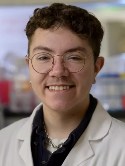Clinicopathologic and genomic analysis of uterine serous carcinomas arising from endometrial hyperplasia Journal Article
| Authors: | Sia, T. Y.; Allison, D. H. R.; Paula, A. D. C.; da Silva, E. M.; Ye, Q.; Selenica, P.; Pareja, F.; Green, H.; Abu-Rustum, N. R.; Weigelt, B.; Ellenson, L. H. |
| Article Title: | Clinicopathologic and genomic analysis of uterine serous carcinomas arising from endometrial hyperplasia |
| Abstract: | Uterine serous carcinoma (USC) typically arises from atrophic endometrium but may be associated with hyperplasia in 5% to 10% of cases. We sought to identify USC with concurrent hyperplasia and (i) define if these are clonally related, and (ii) determine if USC associated with hyperplasia is genetically distinct from USC without hyperplasia. Patients diagnosed with USC and hyperplasia from their hysterectomy specimen between January 1, 2014 and February 29, 2022 were identified. Hyperplasia and carcinoma were separately subjected to tumor-normal panel sequencing. Their repertoire of genetic alterations was compared with that of a separate cohort of atrophy-associated USCs. Of 267 USCs with clinical sequencing and slides available for review, 8 with concurrent carcinoma and hyperplasia had sufficient tissue for molecular studies. In 7 (87.5%) of these 8 cases, USC and hyperplasia were clonally related and shared multiple mutations, including TP53 in 4 cases (57%). In 1 case (USC4), USC and hyperplasia were unrelated at the genetic level, and the hyperplasia was TP53 wild-type. In another case (USC5), USC and TP53 wild-type hyperplasia shared 1 of 11 mutations while being distinct at the copy number level. The prevalence of ARID1A mutations was higher in hyperplasia-associated USC compared with atrophy-associated USC (43% vs. 0%, respectively; P=0.02). USC and co-occurring hyperplasia were clonally related in most cases, commonly harboring TP53 hotspot mutations in both components. These results suggest an alternative origin of tumorigenesis in this rare subset of endometrial cancers. |
| Keywords: | survival; endometrial cancer; tumors; microsatellite instability; precursor; serous carcinoma; p53; molecular profiling; mutations; sequencing; expression; lesion; endometrial hyperplasia; arid1a; cancer |
| Journal Title: | American Journal of Surgical Pathology |
| Volume: | 49 |
| Issue: | 8 |
| ISSN: | 0147-5185 |
| Publisher: | Lippincott Williams & Wilkins |
| Date Published: | 2025-08-01 |
| Start Page: | 753 |
| End Page: | 762 |
| Language: | English |
| ACCESSION: | WOS:001529479900001 |
| DOI: | 10.1097/pas.0000000000002401 |
| PROVIDER: | wos |
| PUBMED: | 40298247 |
| Notes: | The MSK Cancer Center Support Grant (P30 CA008748) is acknowledge in the PDF -- Corresponding authors is MSK author: Lora H. Ellenson -- Source: Wos |
Altmetric
Citation Impact
BMJ Impact Analytics
MSK Authors
-
 646
646Weigelt -
 148
148Da Cruz Paula -
 228
228Pareja Zea -
 99
99Da Silva -
 194
194Selenica -
 113
113Ellenson -
 15
15Allison -
 6
6Ye -
 21
21Green
Related MSK Work


